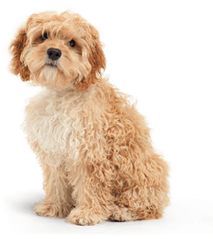Six simple steps to a balanced diet

A balanced diet is essential for good health and an energetic pet. But what exactly is meant by a balanced diet?
To keep your particular pet eating the best diet for them, keep in mind the following factors:
1: Different species, different needs
Each species of animal differs in the way it handles food and therefore each has different dietary requirements. For example, cats have a very definite need for meat in their diet because they must have a particular amino acid (taurine), which is only present in animal protein.
2: The effect of gender
The sex of your pet should also be considered. For example, neutering can have a more profound effect on the metabolic rate of a bitch than a dog, lowering it more in the female after spaying than in the dog after castration. This is why a spayed bitch is more inclined to gain weight than a castrated dog, unless you make appropriate changes to the diet.
3: What life stage are they at?
If you have owned your pet from a few weeks of age, it is obvious how much it is growing and its body is changing. There is actual weight gain while the bones are growing and muscles are developing. After a period of maturity, ageing starts to take place, often accompanied by a reduction in activity. A pet's diet should therefore address the different needs of each stage in life. If your pet is feeling unwell, it may lose its appetite at precisely the time when its body has increased needs for high-quality nutrition.
4: Are they stressed or bored?
There are also numerous external factors that will influence the ideal, balanced diet for your pet. A stress, such as being away from home in a kennel, can result in weight loss if your pet goes off its food. Alternatively, some pets may gain weight while in kennels, due to a reduction in exercise.
5: How do they look?
The aim of any diet is to maintain your pet at a body condition of 3, on a scale where 1 is emaciated and 5 is morbidly obese. For rabbits and other small furries, a reduced scale of 1 (thin), 2 (ideal) and 3 (overweight) may be used. It is useful to be able to put a figure to an individual pet's appearance in addition to the actual body weight because this gives an idea of how the weight is being carried. After all, what may be an ideal weight for a tall person could be grossly overweight for a short person. You can also measure your pet around the chest and waist and monitor changes that way.
6: What tastes good?
Any diet that is offered to your pet will only be eaten if it is palatable. If a tablet could be formulated which met all the needs for your daily diet, would you eat it as willingly as three delicious meals per day? It stands to reason that if the food is not eaten then your pet's needs won't be met.
PS: Your pet's diet isn't working if...
- He's overweight or underweight for his size and shape.
- He's not thriving. If your pet is still young and growing, is he developing as he should do? If you see their littermate, how does he compare?
- His coat isn't glossy and in great condition - the outward sign of a healthy pet.
- He's lethargic. Is your pet exercising as much as you would expect, or lying around?
- He isn't alert. Does your pet seem as keen and interested in life as you would expect?
- He has dental problems - this is best avoided by feeding a balanced diet from the outset.
By Alison Logan, vet
Originally published in issue 5 of PetPeople, the Petplan customer magazine

